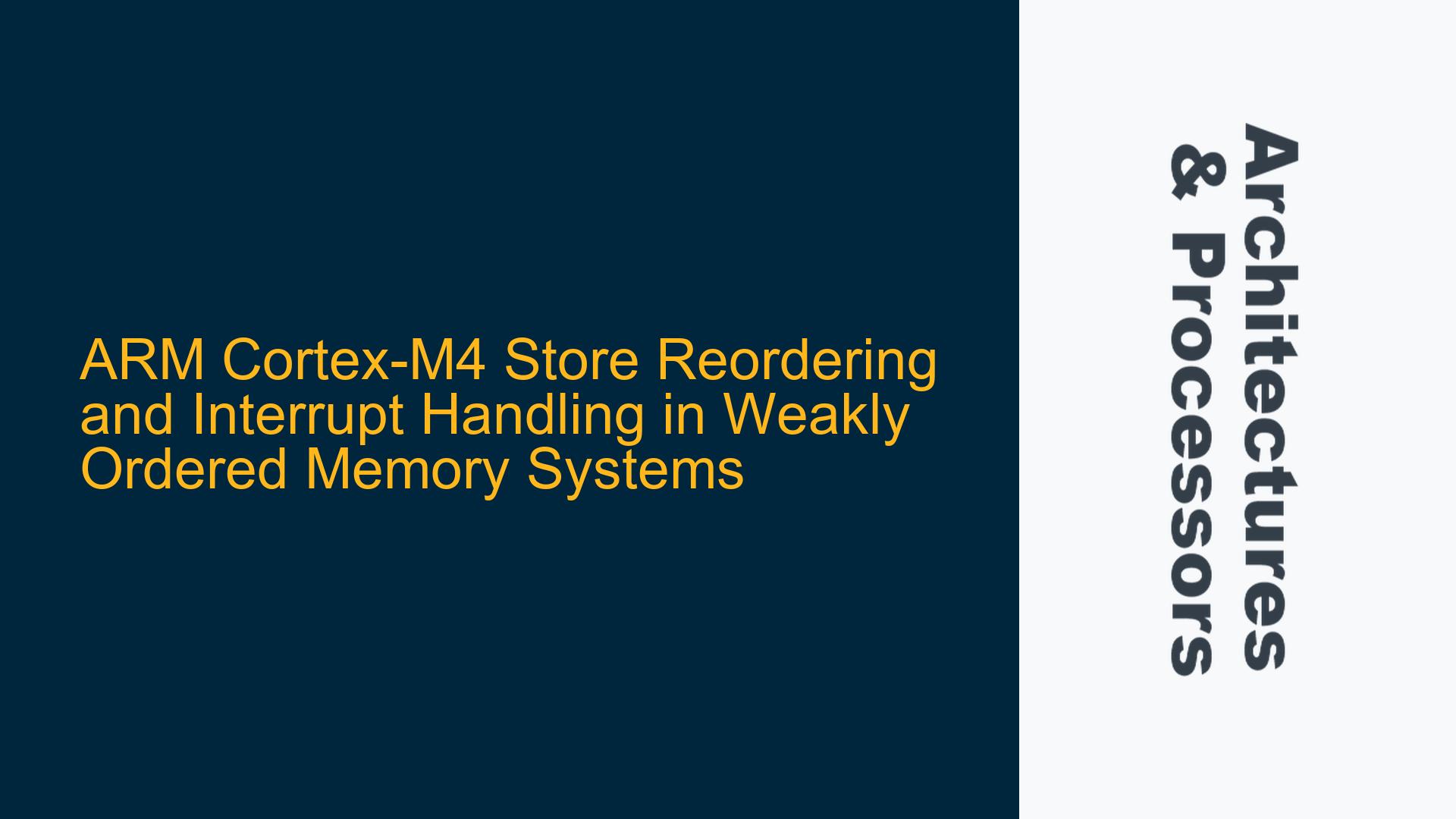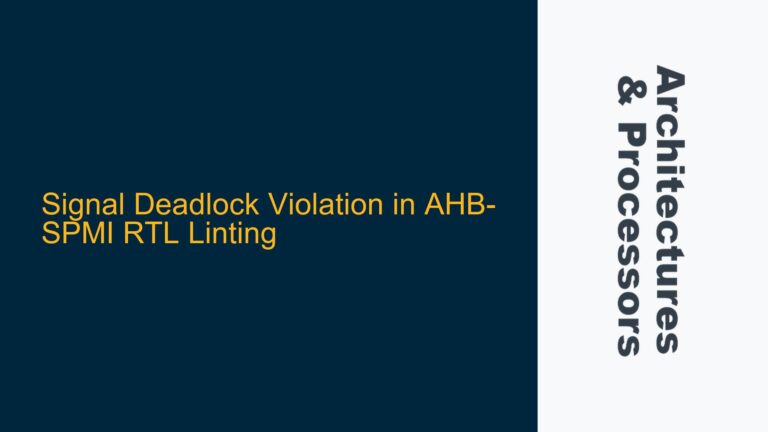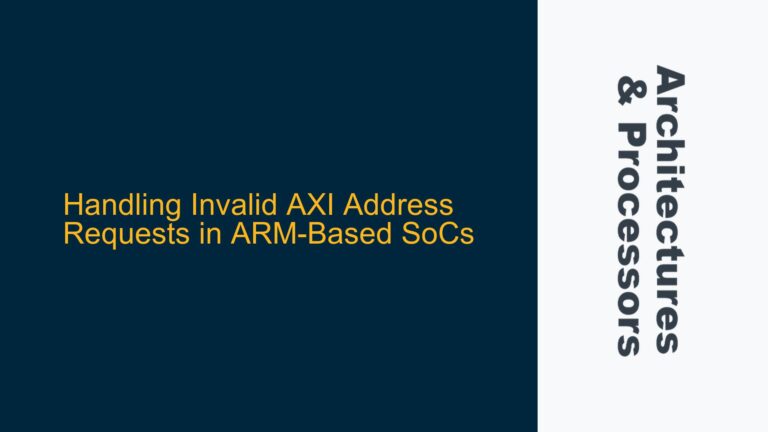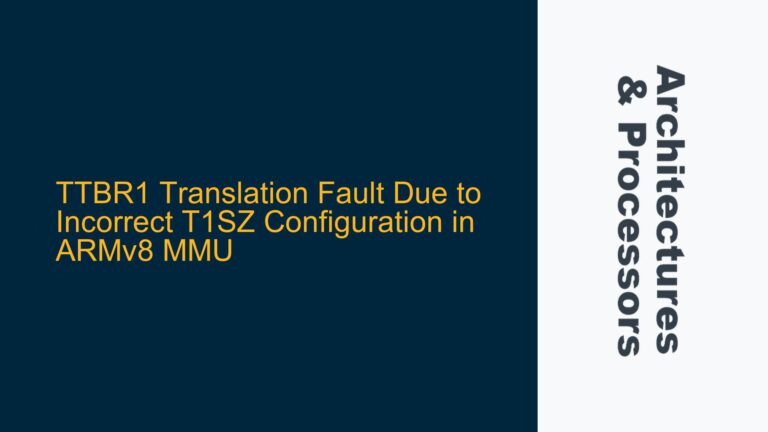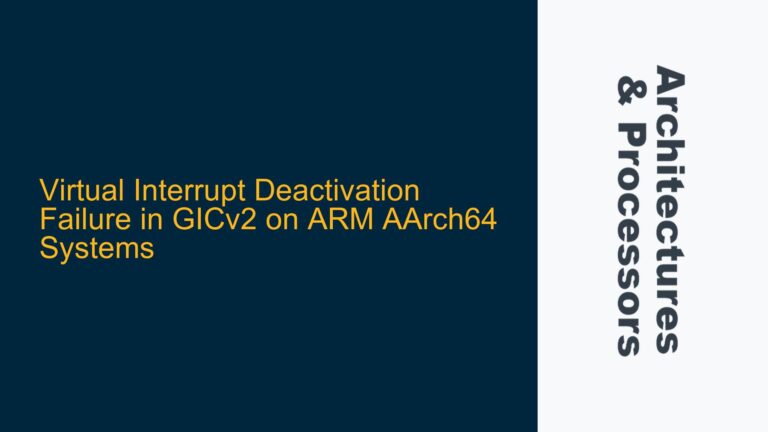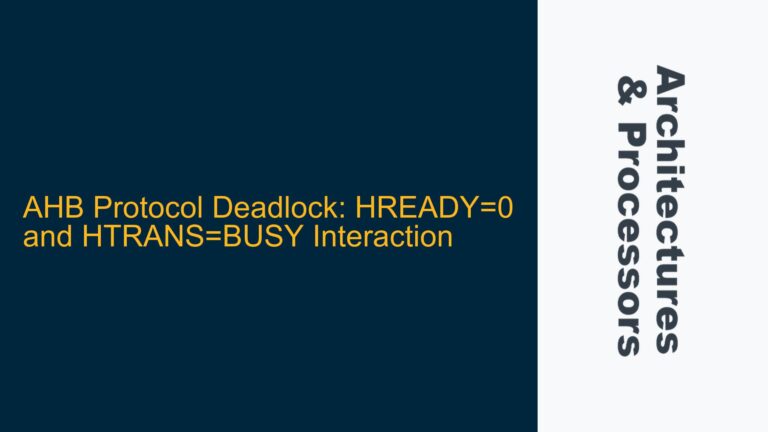Store Reordering and Interrupt Timing in Weakly Ordered Memory Systems
In ARM architectures, particularly those with weakly ordered memory models like ARMv8, understanding the interaction between store reordering and interrupt handling is critical for ensuring correct program behavior. The core issue revolves around the timing of interrupts relative to store operations and how the ARM processor ensures memory consistency when an interrupt occurs. Specifically, the concern is whether an interrupt can arrive after a store to one memory location has been committed but before a store to another location has completed, potentially leading to inconsistent memory states.
In the provided scenario, two stores are executed in sequence: one to memory location [R1] and another to [R2]. The question is whether an interrupt can occur after the store to [R2] has been committed but before the store to [R1] has completed. This situation is particularly relevant in multi-threaded or multi-core systems where one processor (P1) is writing to memory and another processor (P2) is reading from it. The weakly ordered memory model allows for store reordering, meaning that the stores to [R1] and [R2] may not necessarily complete in program order. This reordering can lead to scenarios where P2 reads an inconsistent state if proper synchronization mechanisms are not in place.
The ARM architecture provides mechanisms to handle such scenarios, including the use of Data Memory Barriers (DMB) and exclusive access instructions. However, the specific behavior of the processor when an interrupt occurs during store operations requires a deeper understanding of the ARM pipeline, particularly the role of the Reorder Buffer (ROB), Load-Store Queue (LSQ), and Store Buffer (STB).
Reorder Buffer (ROB) and Store Buffer (STB) Behavior During Interrupts
The ARM processor pipeline includes several stages where instructions are executed out-of-order (OoO) but are retired in-order. The Reorder Buffer (ROB) plays a crucial role in ensuring that instructions retire in the correct program order, even if they were executed out-of-order. When a store instruction is executed, it moves from the Load-Store Queue (LSQ) to the Store Buffer (STB), where it waits to be committed to the cache. The STB allows for store reordering, meaning that stores may not necessarily be committed to memory in the order they were executed.
However, when an interrupt occurs, the ARM processor must ensure that all pending stores are committed to memory before handling the interrupt. This is achieved by draining the Store Buffer (STB), which forces all pending stores to be written to memory. The Exception Link Register (ELR) will then point to the instruction following the last retired instruction, ensuring that the processor resumes execution from the correct point after the interrupt is handled.
In the context of the provided scenario, if an interrupt occurs after the store to [R2] has been committed but before the store to [R1] has completed, the processor will drain the STB, ensuring that the store to [R1] is also committed before handling the interrupt. This ensures that there is no inconsistency in the memory state when the interrupt handler is executed.
Implementing Data Memory Barriers (DMB) and Exclusive Access for Synchronization
While the ARM processor ensures that all pending stores are committed before handling an interrupt, it is still possible for a reader (P2) to observe an inconsistent state if proper synchronization mechanisms are not in place. This is particularly relevant in multi-core systems where one core may be writing to memory while another core is reading from it. To prevent such inconsistencies, ARM provides several synchronization mechanisms, including Data Memory Barriers (DMB) and exclusive access instructions.
A Data Memory Barrier (DMB) ensures that all memory accesses before the barrier are completed before any memory accesses after the barrier are executed. In the provided scenario, inserting a DMB between the store to [R1] and the store to [R2] would ensure that the store to [R1] is completed before the store to [R2] is executed. This prevents the possibility of P2 observing an inconsistent state where [R2] has been updated but [R1] has not.
Exclusive access instructions, such as LDREX and STREX, provide a mechanism for atomic read-modify-write operations. These instructions can be used to ensure that a memory location is not modified by another thread or core between the read and write operations. In the context of the provided scenario, using exclusive access instructions to modify [R1] and [R2] would ensure that the memory locations are not modified by another thread or core while the stores are being executed.
In summary, the ARM processor ensures that all pending stores are committed before handling an interrupt, preventing inconsistencies in the memory state. However, in multi-core systems, additional synchronization mechanisms such as Data Memory Barriers (DMB) and exclusive access instructions are necessary to ensure that readers observe a consistent memory state. By understanding the behavior of the Reorder Buffer (ROB), Store Buffer (STB), and the ARM pipeline, developers can implement the necessary synchronization mechanisms to ensure correct program behavior in weakly ordered memory systems.
Detailed Analysis of ARM Pipeline and Memory Consistency
To fully understand the implications of store reordering and interrupt handling in ARM architectures, it is necessary to delve into the details of the ARM pipeline and how it ensures memory consistency. The ARM pipeline consists of several stages, including fetch, decode, execute, memory access, and writeback. The execute stage can be further divided into multiple sub-stages, depending on the complexity of the instruction being executed.
In the context of store instructions, the execute stage involves moving the store instruction from the Load-Store Queue (LSQ) to the Store Buffer (STB). The LSQ is responsible for holding load and store instructions until they are ready to be executed, while the STB holds store instructions until they are ready to be committed to memory. The STB allows for store reordering, meaning that stores may not necessarily be committed to memory in the order they were executed.
The Reorder Buffer (ROB) plays a crucial role in ensuring that instructions retire in the correct program order, even if they were executed out-of-order. When a store instruction is executed, it moves from the LSQ to the STB, where it waits to be committed to memory. The ROB ensures that all instructions before the store instruction in program order have been executed and retired before the store instruction is retired. This ensures that the store instruction is committed to memory in the correct order, even if it was executed out-of-order.
When an interrupt occurs, the ARM processor must ensure that all pending stores are committed to memory before handling the interrupt. This is achieved by draining the Store Buffer (STB), which forces all pending stores to be written to memory. The Exception Link Register (ELR) will then point to the instruction following the last retired instruction, ensuring that the processor resumes execution from the correct point after the interrupt is handled.
In the context of the provided scenario, if an interrupt occurs after the store to [R2] has been committed but before the store to [R1] has completed, the processor will drain the STB, ensuring that the store to [R1] is also committed before handling the interrupt. This ensures that there is no inconsistency in the memory state when the interrupt handler is executed.
Practical Implications and Best Practices
Understanding the behavior of the ARM pipeline and the role of the Reorder Buffer (ROB), Store Buffer (STB), and Load-Store Queue (LSQ) is essential for writing correct and efficient code for ARM processors. In particular, developers must be aware of the implications of store reordering and the need for proper synchronization mechanisms in multi-core systems.
One common pitfall is assuming that stores will be committed to memory in program order, even in weakly ordered memory systems. This assumption can lead to subtle bugs that are difficult to diagnose and fix. To avoid such issues, developers should use Data Memory Barriers (DMB) to enforce the correct ordering of memory accesses. In the provided scenario, inserting a DMB between the store to [R1] and the store to [R2] would ensure that the store to [R1] is completed before the store to [R2] is executed.
Another important consideration is the use of exclusive access instructions for atomic read-modify-write operations. In multi-core systems, it is possible for two cores to attempt to modify the same memory location simultaneously, leading to race conditions and inconsistent memory states. Exclusive access instructions, such as LDREX and STREX, provide a mechanism for ensuring that a memory location is not modified by another core between the read and write operations. In the context of the provided scenario, using exclusive access instructions to modify [R1] and [R2] would ensure that the memory locations are not modified by another core while the stores are being executed.
In addition to using synchronization mechanisms, developers should also be aware of the impact of interrupts on memory consistency. When an interrupt occurs, the ARM processor will drain the Store Buffer (STB), ensuring that all pending stores are committed to memory before handling the interrupt. However, this behavior can lead to increased interrupt latency, particularly if there are many pending stores in the STB. To minimize interrupt latency, developers should aim to reduce the number of pending stores in the STB by using Data Memory Barriers (DMB) and other synchronization mechanisms to ensure that stores are committed to memory as soon as possible.
Conclusion
Store reordering and interrupt handling in weakly ordered memory systems are complex topics that require a deep understanding of the ARM pipeline and memory consistency mechanisms. By understanding the behavior of the Reorder Buffer (ROB), Store Buffer (STB), and Load-Store Queue (LSQ), developers can write correct and efficient code for ARM processors. In particular, developers should be aware of the implications of store reordering and the need for proper synchronization mechanisms in multi-core systems. By using Data Memory Barriers (DMB) and exclusive access instructions, developers can ensure that memory accesses are properly ordered and that memory locations are not modified by another core while stores are being executed. Additionally, developers should be aware of the impact of interrupts on memory consistency and take steps to minimize interrupt latency by reducing the number of pending stores in the Store Buffer (STB).
In summary, the ARM processor ensures that all pending stores are committed before handling an interrupt, preventing inconsistencies in the memory state. However, in multi-core systems, additional synchronization mechanisms such as Data Memory Barriers (DMB) and exclusive access instructions are necessary to ensure that readers observe a consistent memory state. By understanding the behavior of the ARM pipeline and implementing the necessary synchronization mechanisms, developers can ensure correct program behavior in weakly ordered memory systems.
